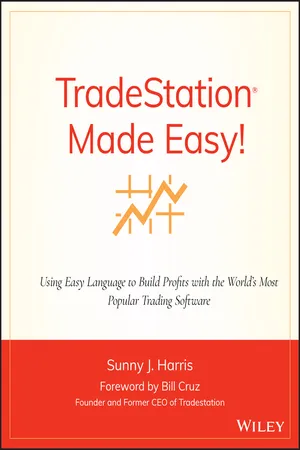Java For Loop
A Java for loop is a control flow statement that allows for repeated execution of a block of code. It consists of three parts: initialization, condition, and iteration. The loop continues to execute as long as the condition is true, and the iteration statement updates the loop control variable. This construct is commonly used for iterating through arrays or collections in Java.
4 Key excerpts on "Java For Loop"
- eBook - ePub
Coding + Math
Strengthen K–5 Math Skills With Computer Science
- Nicol R. Howard(Author)
- 2020(Publication Date)
...However, conditionals can also be modeled effectively through the use of flowcharts or unplugged programming activities. Loops Loops are a mainstay of programming, allowing far more efficiency in programming tasks that must be repeated until a desired result is achieved. For example, if a programmer wants the program to perform a task repeatedly a certain number of times but wants the user to determine that number at runtime, the code would utilize a “for-loop”, accepting user input to set the number of intervals. In Scratch terminology, the coder could use an “ask” block to get user input on how many times the sprite should follow a certain sequence. In that case, the code would contain a “repeat” block to encapsulate the loop containing the blocks in the sequence. This not only prevents the need for repetitive code, but also avoids restricting the loop to some predetermined maximum number of iterations. While loops provide additional power and flexibility to the programmer, they also present a source of potential errors if not used properly. Research has shown the use of endless loops in the Scratch environment as a source of many programming errors, where programs get stuck in never-ending loops (Zhang & Nouri, 2019). Varied understanding of different types of loops, particularly nested loops, have often caused confusion, but this confusion has been less prevalent for Scratch users as compared to text-based languages, since loops are easier to identify in a block-based environment (Mladenovi et al., 2017). Perhaps the best analogy for loops in math is summation notation (∑ 2 i, e.g., meaning the summation of all values of 2 i, starting with 1 and ending with 10); this concept is usually not covered until secondary school...
- eBook - ePub
TradeStation Made Easy!
Using EasyLanguage to Build Profits with the World's Most Popular Trading Software
- Sunny J. Harris(Author)
- 2011(Publication Date)
- Wiley(Publisher)
...Chapter 11 Loops In This Chapter Introduction For While INTRODUCTION A loop is just as it sounds; it goes around and around until you tell it to stop. A loop defines a group of instructions that will continue executing until a condition is met. The condition being met will cause the loop to stop. A FOR loop will execute a predefined number of times. The predefined number of times is the condition. A WHILE loop will continue to execute while (as long as) the condition is true. Loops allow you to calculate something over a range of values, such as from 1 to 10. Or to take action only while a condition is met, such as: while it is the month of October, only take short trades. Loops allow you to calculate averages, and summations and even count backward. As your programming skills become more proficient, you will find yourself discovering more and more uses for loops. FOR TEMPLATE 1 FOR Value1 = m TO n BEGIN … END; TEMPLATE 2 FOR Value1 = m DOWNTO n BEGIN … END; The FOR command always appears with a BEGIN … END block and is sometimes referred to as a FOR … BEGIN command. The FOR command is always followed by a set of variables that define the starting and ending number of steps to execute the loop. This structure is pretty complex until you get accustomed to it; then it will become second nature, so don’t start worrying yet. Templates for these concepts are shown above. You will specify m and n, and provide code for your task in place of the... s. FOR is always followed by a variable name (Value1 in Figure 11.1). The command tells the computer to perform a set of actions a specified number of times. The variable counts the number of times as it steps through the loop...
- eBook - ePub
- Mike McGrath(Author)
- 2020(Publication Date)
- In Easy Steps Limited(Publisher)
...Traditionally, this trivial counter variable is simply named “i”. • Condition – an expression that is tested for a boolean true value on each iteration. When the evaluation returns true, the loop statements are then executed to complete that iteration. If the evaluation returns false, the statements are not executed and the loop ends. Typically, the condition examines the value of the loop counter variable. • Modifier – a statement that modifies a value in the test condition so that at some point its evaluation will return false. Typically, this will increment, or decrement, the loop counter variable. For example, a for loop structure to execute a set of statements one hundred times might look like this: let i for (i = 0 ; i < 100 ; i++) { statements-to-be-executed } In this case, the counter variable is incremented on each iteration until its value reaches 100, upon which the evaluation returns false and the loop ends. Unless the modifier enables the evaluation to return false at some point, an infinite loop is created that will run forever. Create an HTML document with a self-invoking function that begins by initializing a loop counter variable let i = 0 for.html Next, insert a for loop structure that will make 10 iterations and output the value of the loop counter on each iteration for(i = 1 ; i < 11 ; i ++) { console.log(‘ Iteration Number: ‘ + i) } Save the HTML document, then open it in your browser and launch the console to see the loop iterations This is the. regular for loop. There is also a special for in loop that is used to iterate through properties of an object and is demonstrated later, here. Loop While The for loop structure, described here, is ideal when the number of required iterations is a known quantity, but when this is unknown a while loop structure is often preferable...
- eBook - ePub
- Bill Sempf, Charles Sphar, Stephen R. Davis(Authors)
- 2010(Publication Date)
- For Dummies(Publisher)
...Compared to the for loop, however, the while loop is used about as often as metric tools in an American machine shop. The for loop has this structure: for(initExpression; condition; incrementExpression) { //. . . body of code. . . } When the for loop is encountered, the program first executes the initExpression expression and then executes the condition. If the condition expression is true, the program executes the body of the loop, which is surrounded by the braces immediately following the for command. When the program reaches the closed brace, control passes to incrementExpression and then back to condition, where the next pass through the loop begins. In fact, the definition of a for loop can be converted into this while loop: initExpression; while(condition) { //. . . body of code. . . incrementExpression; } An example You can better see how the for loop works in this example: // Here is one C# expression or another. a = 1; // Now loop for awhile. for(int year = 1; year < duration; year = year + 1) { //. . . body of code. . . } // The program continues here. a = 2; Assume that the program has just executed the a = 1; expression. Next, the program declares the variable year and initializes it to 1. Then the program compares year to duration. If year is less than duration, the body of code within the braces is executed. After encountering the closed brace, the program jumps back to the top and executes the year = year + 1 clause before sliding back over to the year < duration comparison. The year variable is undefined outside the scope of the for loop...



